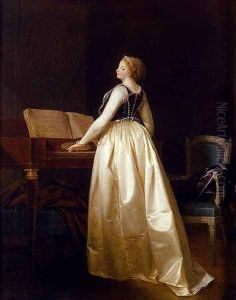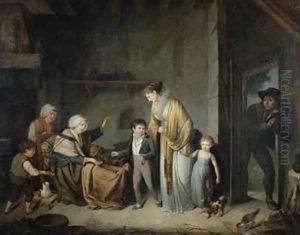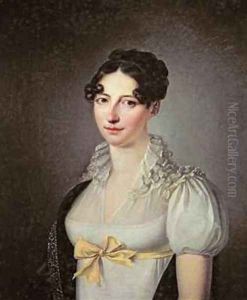Henri-Nicolas Van Gorp Paintings
Henri-Nicolas Van Gorp, also known as Hendrik-Nikolaas van Gorp, was a French painter born on January 3, 1756, in Antwerp, which was at that time part of the Austrian Netherlands. His artistic journey began in his hometown, where he was influenced by the rich artistic traditions of the Flemish region. However, he later moved to France, where he became associated with the French school of painting.
Van Gorp's work was primarily known for its historical and mythological subjects, a common theme among artists of his time. He was skilled in the neoclassical style, which sought to emulate the art and architecture of ancient Greece and Rome. This was a prevalent trend in Europe following the discoveries at Herculaneum and Pompeii, which had a significant impact on the artistic scene of the 18th and early 19th centuries.
Despite not being as widely recognized as some of his contemporaries, such as Jacques-Louis David, Van Gorp made contributions to the art world during the period of the French Revolution and the subsequent Napoleonic Wars. His works were exhibited at the Paris Salon, the official art exhibition of the Académie des Beaux-Arts in Paris, which was the premier art event of the time.
Henri-Nicolas Van Gorp's life and career were influenced by the tumultuous events of his era, including the French Revolution and the rise and fall of Napoleon Bonaparte. These events affected artists in various ways, as the patronage system underwent significant changes and the demand for certain types of art fluctuated. Nevertheless, Van Gorp continued to work and adapt to the changing times.
Van Gorp passed away on October 23, 1819, in Paris. His body of work remains as a testament to the neoclassical movement and the complex historical period in which he lived. Although not as famous as some of his peers, his paintings contribute to the rich tapestry of European art history and provide insight into the aesthetics and ideologies of his time.


